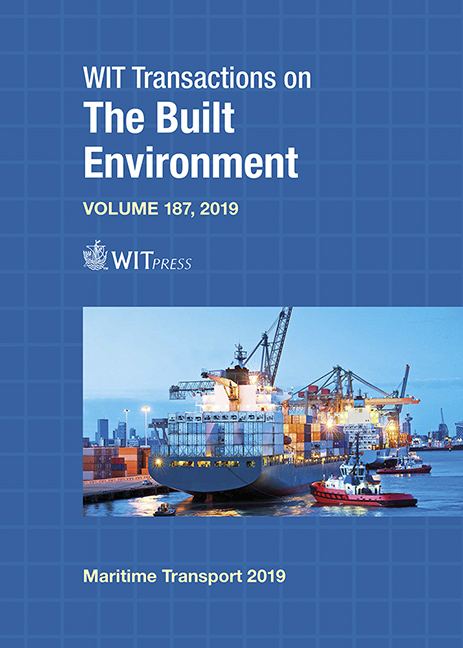IMPROVEMENT IN WORKABILITY OF TERMINALS PLACED ALONG THE INNER SIDE OF PORT VERTICAL BREAKWATERS BY MEANS OF RECURVED PARAPET WALLS
Price
Free (open access)
Transaction
Volume
187
Pages
8
Page Range
23 - 30
Published
2019
Size
459 kb
Paper DOI
10.2495/MT190031
Copyright
WIT Press
Author(s)
PAOLO DE GIROLAMO, MYRTA CASTELLINO, ALESSANDRO ROMANO
Abstract
The function of main port breakwaters is to protect harbour basins from incoming waves and currents. In the event that a maritime terminal is placed on the inner side of a main breakwater, it is extremely important to limit waves overtopping the structure, because the overtopping flows may be very dangerous for the safety of the operations taking place in the terminal. Very often during storms if the overtopping discharges are severe, the terminal is temporarily closed, reducing its average annual workability accordingly. Wave overtopping is normally limited by using high parapet walls (crownwalls) which are not well considered from an environmental point of view due to their visual impact. A good solution to reduce wave overtopping limiting the increasing of the crownwalls height, is to use recurved parapet walls. The paper presents a new formula for recurved walls which can be used to estimate the overtopping flow rates reduction compared to normal vertical parapets. The formula has been obtained for vertical breakwaters by using numerical computations. The recurved parapet has the shape of a circumference sector, characterized by a radius and an opening angle. The numerical computations were performed applying OpenFOAM® which solves the 3D RANS equations for multiphase flows (air and water). The results show the high hydraulic efficiency of recurved walls in reducing overtopping rates compared to traditional vertical parapets.
Keywords
recurved parapet walls, wave overtopping, terminals workability, vertical breakwaters





